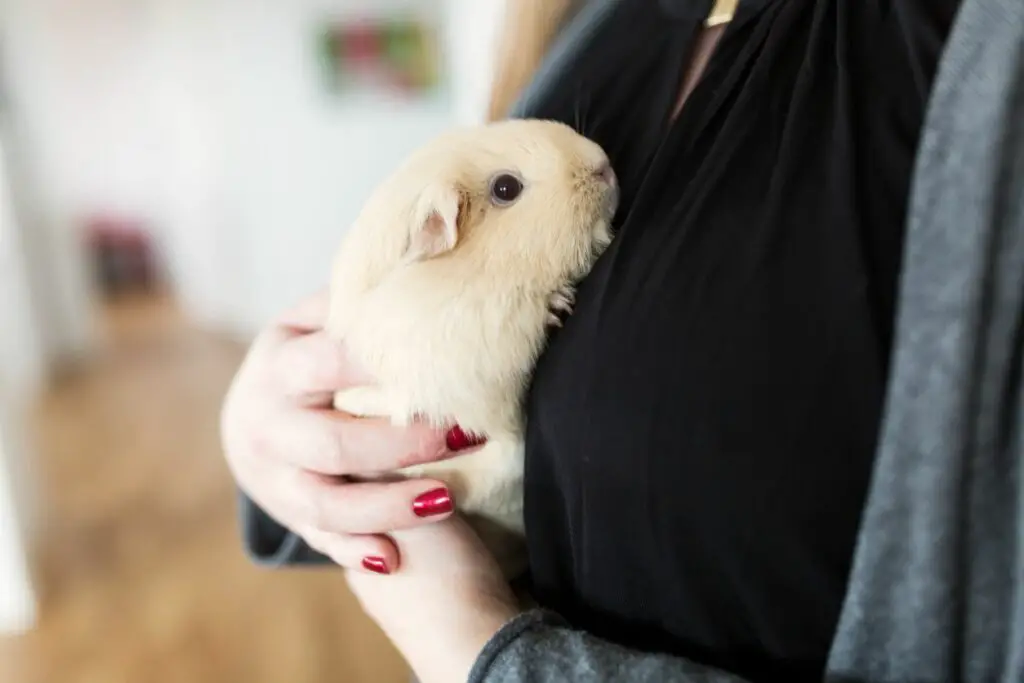Guinea pigs, also known as cavy or domestic guinea pigs, have been a popular pet choice for many years. They are friendly, social, and easy to care for, making them great pets for people of all ages. But where did these adorable creatures come from?
In this blog post, we will explore the origin of guinea pigs, their role in the modern world, their breeds and characteristics, and how to care for them as pets.

The Origin of Guinea Pigs
Guinea pigs are native to South America, specifically the Andean region. They were first discovered by Spanish explorers in the 16th century, who brought them back to Europe as exotic pets. However, guinea pigs were not originally kept as pets in South America. Instead, they were used for food and medicine by the indigenous people.
Their Habitat and Diet in the Wild
In the wild, guinea pigs live in groups of 10-20 individuals in rocky areas and grasslands. They are herbivores and mainly eat grass, hay, and vegetables. Their diet consists of foods that are high in fiber, which helps keep their digestive system healthy.
Their Domestication by the Incas
The domestication of guinea pigs is believed to have started around 5000 BC by the Incas. They were primarily kept as a source of food and used in religious ceremonies. The Incas believed that guinea pigs had healing powers and would use them in their traditional medicine practices.
Their Role in the Modern World
Introduction to Europe through Spanish Exploration
When the Spanish explorers brought guinea pigs back to Europe, they quickly became popular exotic pets. They were seen as a symbol of wealth and were often kept in ornate cages in the homes of the wealthy.
Rise in Popularity as Exotic Pets in Europe
Guinea pigs continued to gain popularity as pets in Europe throughout the 17th and 18th centuries. They were often featured in paintings and literature, further increasing their popularity.
Their Introduction to America and Worldwide Distribution
Guinea pigs were introduced to North America in the 19th century and quickly became popular pets. Today, guinea pigs are kept as pets all over the world and are a beloved companion animal.
Guinea Pig Breeds and Characteristics
The Different Breeds of Guinea Pigs
There are many different breeds of guinea pigs, each with their unique characteristics. Some of the most common breeds include the American, Abyssinian, Peruvian, and Texel. Each breed has its own personality, coat type, and coloration.
These different breeds of guinea pigs are the result of selective breeding. Breeders took guinea pigs that had certain characteristics and bred them with others that also had these characteristics. Over time, these characteristics became more pronounced, resulting in new breeds.
Their Physical Characteristics and Unique Traits
Guinea pigs are small, furry animals that can weigh anywhere from 1 to 3 pounds. They have short legs, a rounded body, and a small head with large round eyes and ears. Guinea pigs are social animals and thrive on interaction with their human caretakers.
Popular Guinea Pig Use and Caretaker Responsibilities
Popular Uses for Guinea Pigs as Pets
Guinea pigs are typically kept as pets and are popular among families with children due to their friendly and sociable nature. They are also used in scientific research and as therapy animals.
The Responsibilities of Caring for a Guinea Pig
Caring for a guinea pig involves providing them with a proper diet, fresh water, and a clean living environment. They also require regular exercise, grooming, and veterinary care. Guinea pigs are social animals and should be kept in pairs or small groups to ensure their happiness and well-being.
Common Health Issues and How to Resolve Them
Guinea pigs are prone to certain health issues, such as dental problems, respiratory infections, and skin issues. It’s essential to keep an eye on your guinea pig’s health and take them to the veterinarian if you notice any signs of illness. Proper diet, hygiene, and regular veterinary care can help prevent health issues from arising.
Conclusion
Guinea pigs have come a long way from being used for food and medicine in South America to becoming popular pets all over the world. They are friendly, sociable, and easy to care for, making them great pets for people of all ages.
Guinea pigs have become an important part of many cultures throughout history and continue to bring joy and companionship to people today. Whether you’re looking for a new pet or just interested in learning more about these adorable animals, guinea pigs are sure to capture your heart.
- How Long Do American Eskimo Dogs Live? Important Factors and Care Tips - September 29, 2023
- Do American Bulldogs Need Grooming? Essential Tips and Care Guidelines - September 29, 2023
- Do Bengal Cats Enjoy Playing? Essential Tips for Keeping Them Active - September 29, 2023